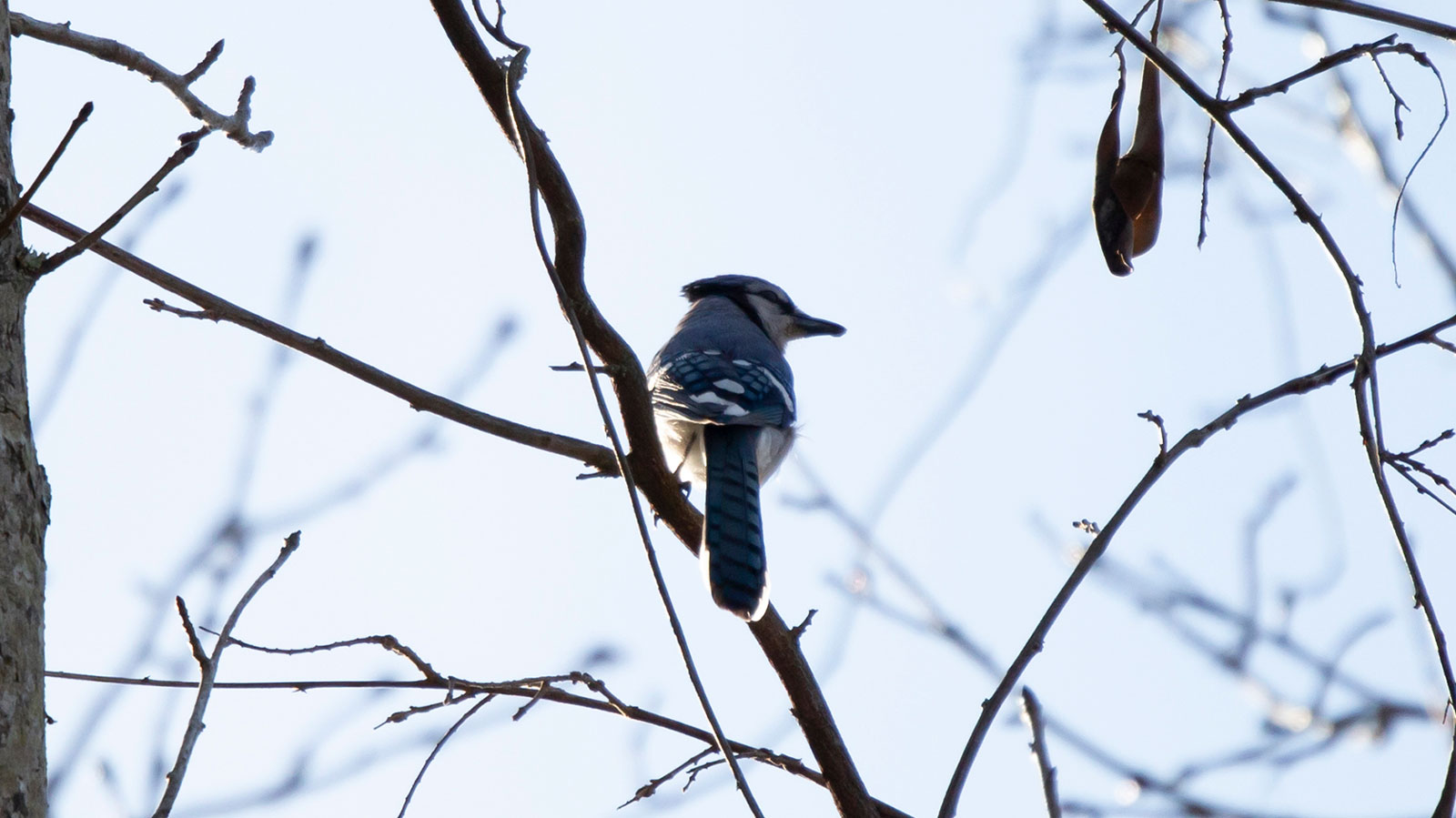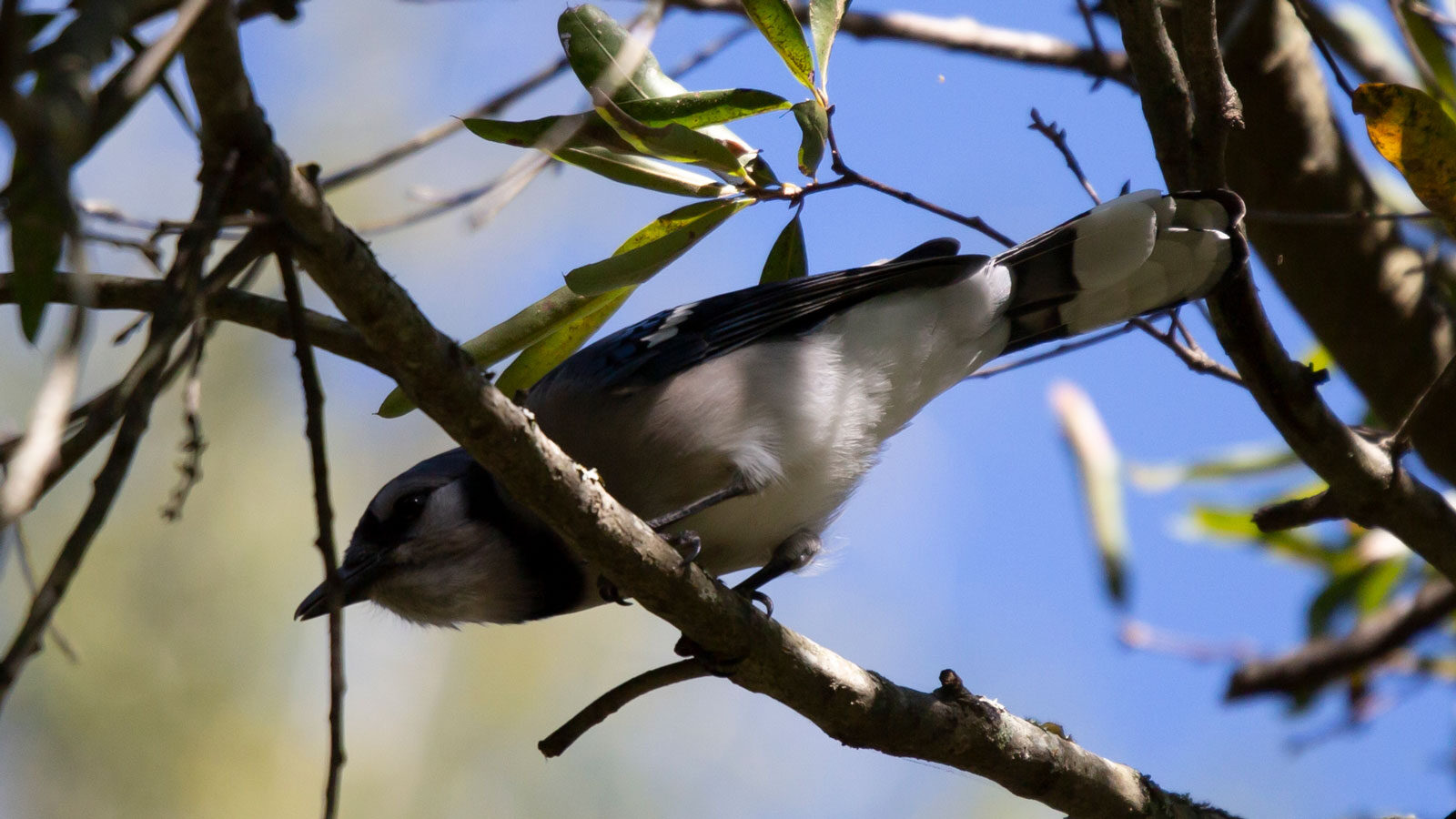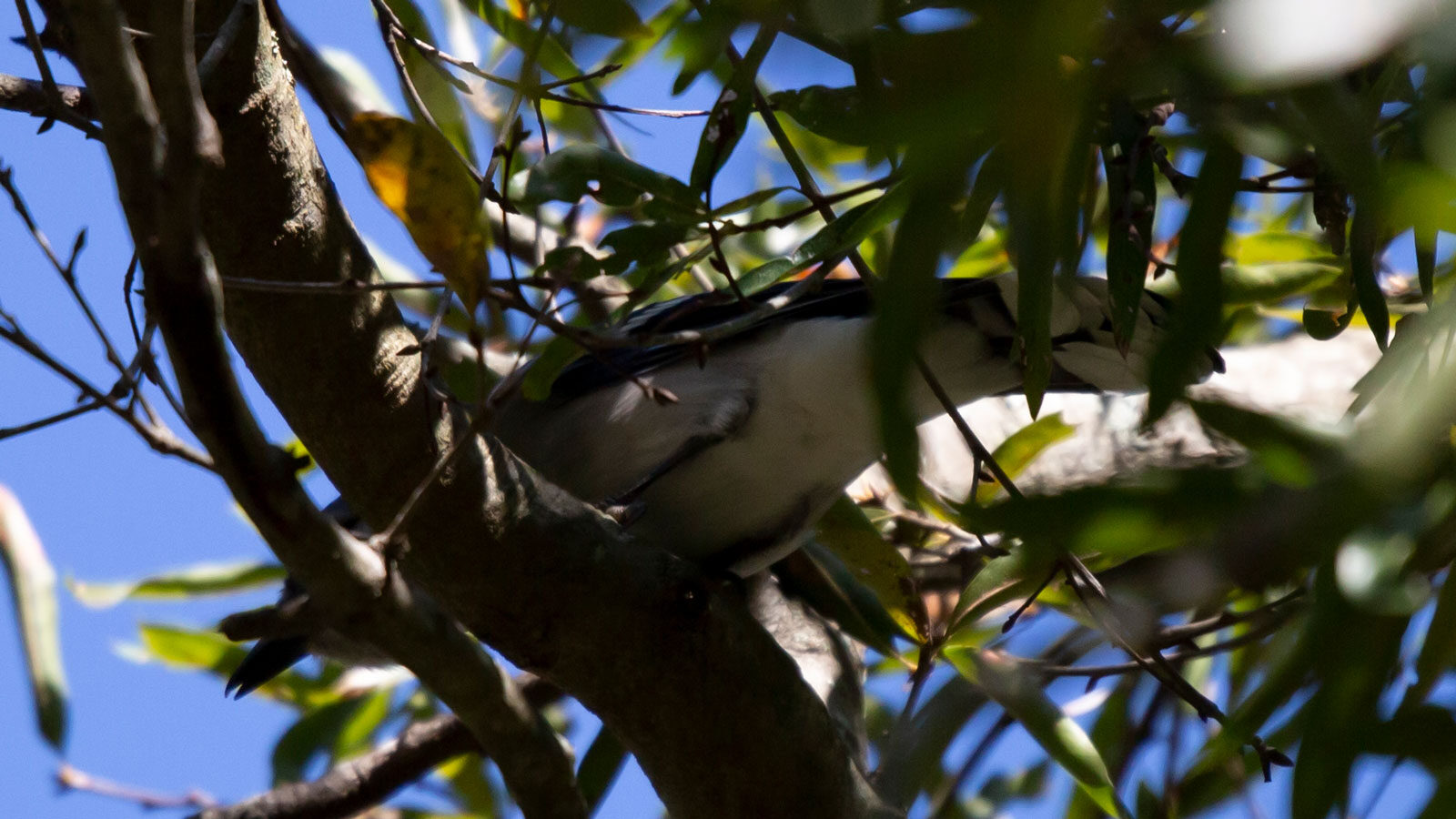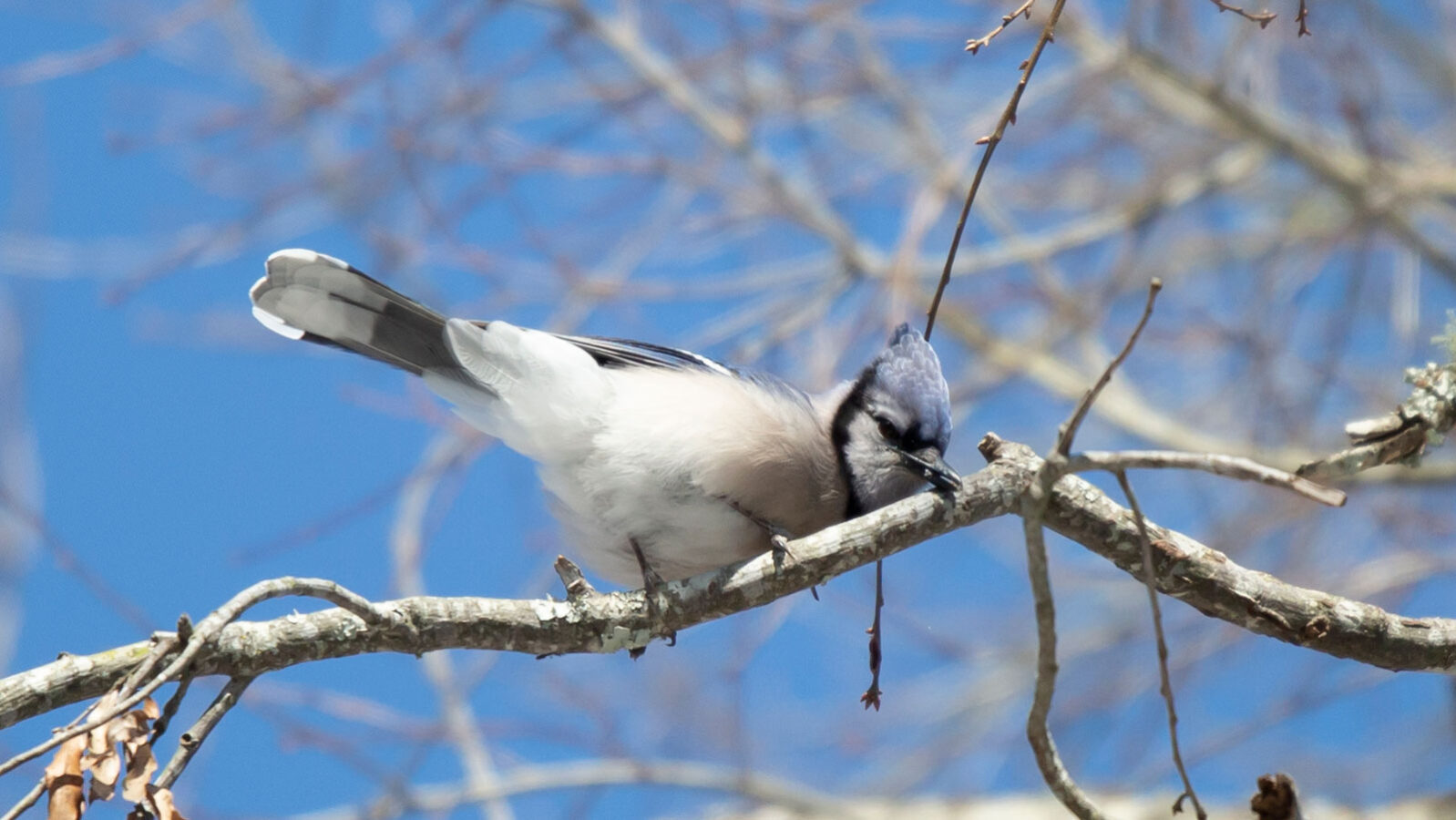
Blue jays are related to crows.
Blue Jays
at
a Glance

Key Features:
Blue jays are blue with white bellies, and black beaks and eyes.
Least Concern - Population Stable
Habitat:
Cities, forests, and towns
nesting habits:
Blue jays build cup-shaped nests in trees made of bark, grass, moss, weeds, and sometimes mud.
seasons blue jays are active in our area:
All year
Diet:
Insects, nuts, seeds, and grains
hunting Behavior:
Blue jays forage on the ground.
Blue jays are unique in North Louisiana
Here are a couple of fun facts.

Blue jays helped spread oak trees after the last glacial period.

Blue jays build complex social systems.